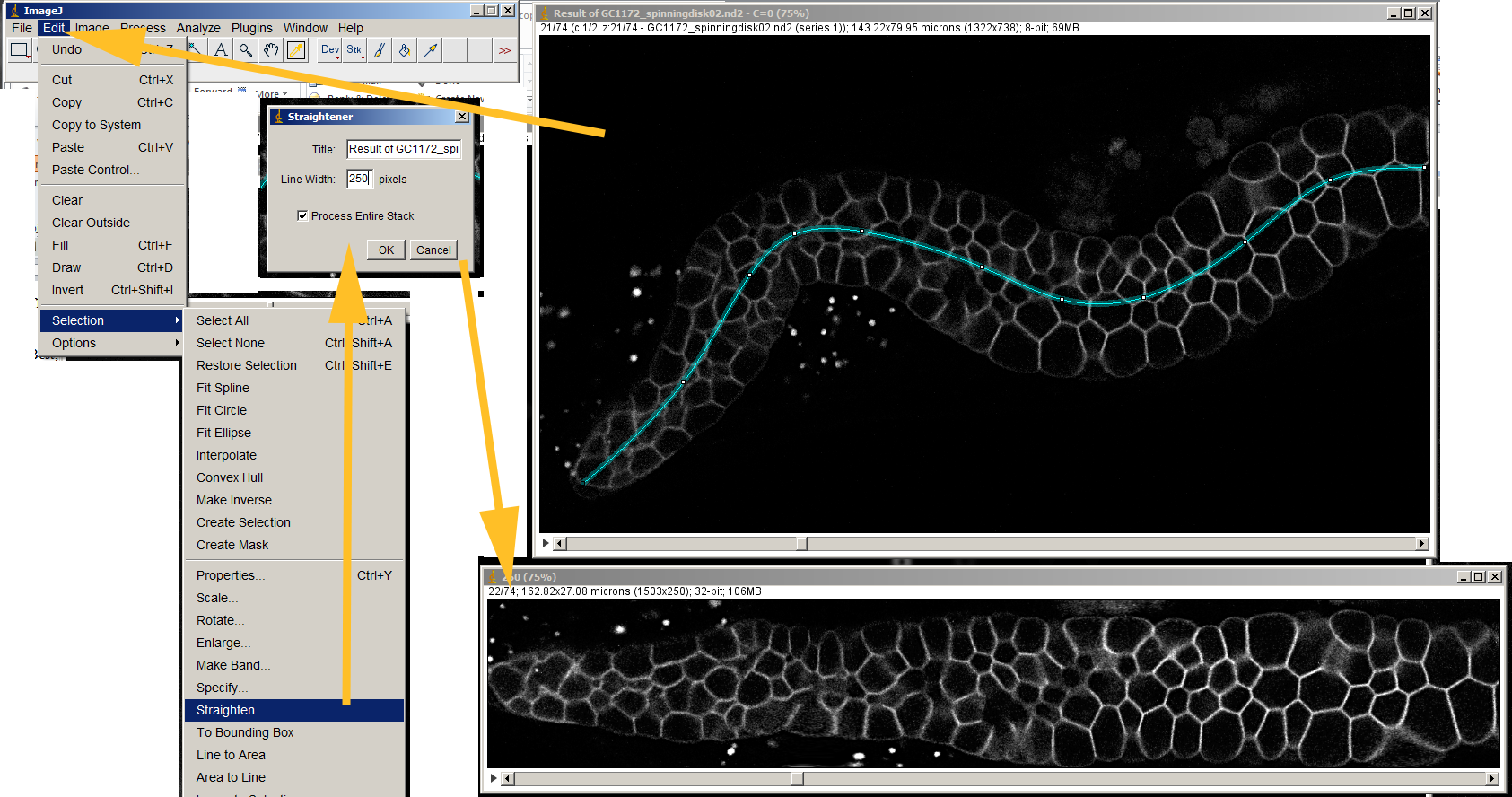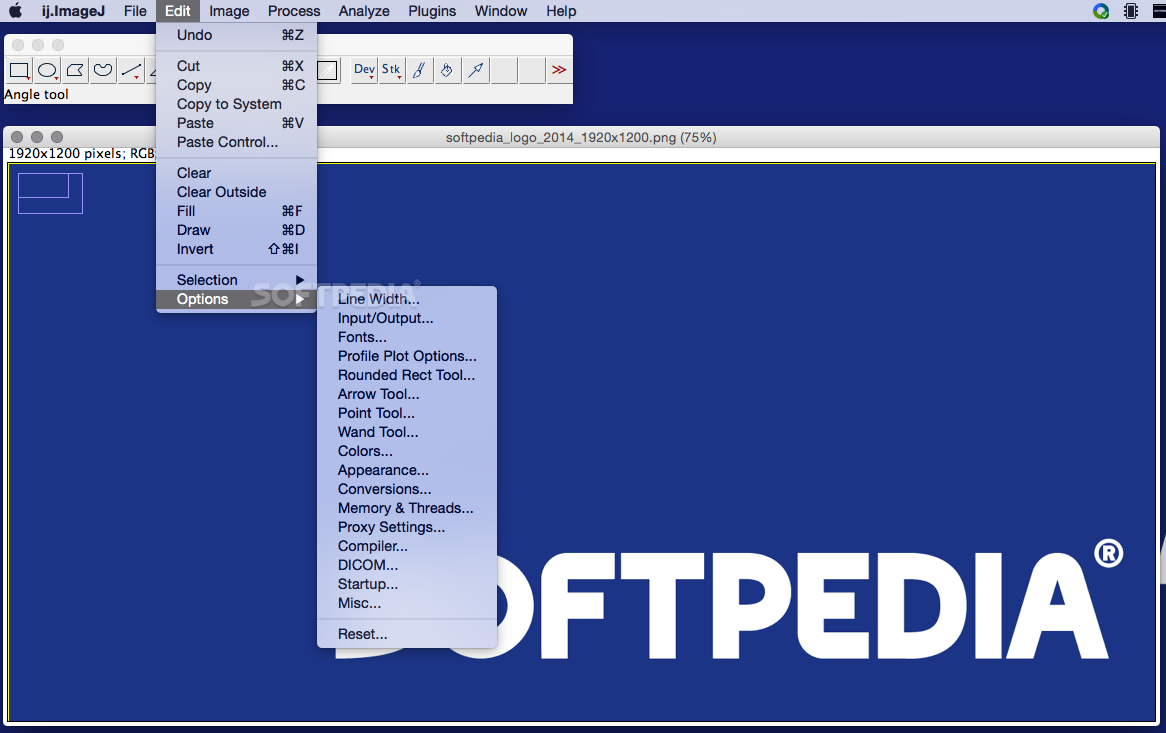
The Panasonic Lumix DC-G9 80 MP pro-grade camera and its performance in microscopy
#Imagej software software
Testing report: Nikon Camera Control Pro2ĢD measuring with Canon EOS cameras (DSLR and DSLM) in microscopy:Ĭontrolling Olympus digital SLR cameras from your PC with the OLYMPUS Studio 2 software To sum up, we can recommend ImageJ as a highly useful software for our area of application that has the added bonus of being available for free.Ĭamera recommendation for microscopy application Depending on the requirements in each case, it can be used as a replacement or complement to other commercial software products. ImageJ works well with other programs, such as Canon Utility, Nikon Remote Control 2 and Capture One. A very interesting feature for us – image acquisition – is also supported under Acquisition of Cameras/Twain.

Filters: Real Convolver, FFT, De-interlace, Auto Gammaĥ) The following tools are located in the Analyze menu:Ħ.) To measure a cell, for example, you need to choose the image measurement tool in the Plugins menu:Īdditional tools include: Brush Tool, Lasso Selection Tool, Pixel Inspection Tool, etc. The working language is English.ĭue to the modular nature of the program, additional functions can be implemented via plugins, which can be downloaded and installed from the website: ġ) As usual, open the image you want to work on with File/Openand import it into ImageJ:Ģ) Use the options available under Edit to perform a variety of standard tasks, such as Cut, Copy, Paste, Clear, Fill, Draw, Invert, etc.ģ) The Image menu contains a selection of image processing routines, such as:Ĥ) The following functions are included in the Process menu: When you first start it, you get only a small toolbar with a list of menu items that give access to most of the functions within the program.
#Imagej software zip file
Installing ImageJ is easy: Download the ZIP file from and unpack the contents. Basic features include a wide range of measurement tools such as length measurement, angle measurement, surface calculation and much more. The program offers a huge array of functions and can be extended using plugins. It was created by US software developer Wayne Rasband, who continues to add features to the program. ImageJ is available as open-source software that is highly extensible and can be used free of charge. It is written in Java, which allows it to run on different operating systems like Windows, Mac and Linux. ImageJ is a powerful and versatile software package designed for scientific image processing and analysis.
The software’s main web site also offers many sources of assistance.The Java ImageJ image editing and processing software in microscopy and macroscopy – a brief review For assistance, contact the OIT HelpDesk at 86.
#Imagej software full
Where can I get support? OIT offers Full Support for ImageJ. To learn on your own, read the Getting Started tutorial, then peruse the User Guides, additional tutorials, and presentations. How can I learn it? At UTK, you can schedule a one-on-one tutorial any time by calling the OIT HelpDesk at 86.

There is no simultaneous user limit for ImageJ. It is available on OIT’s server and on the computers in the OIT public computer labs.
#Imagej software install
Where can I run it? Being open source, you can install it on any Linux, Mac or Windows computer.

What can I use it for? Since the ImageJ is open source software, anyone can use it for almost any purpose. Custom acquisition, analysis and processing plugins can be developed using ImageJ’s built in editor and Java compiler. ImageJ, written in Java, was designed with an open architecture that provides extensibility via Java plugins. What is it? ImageJ is a free, open source image processing program that can display, edit, analyze, process, save and print various image types.


 0 kommentar(er)
0 kommentar(er)
